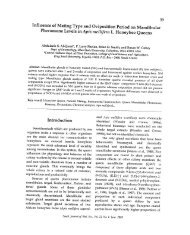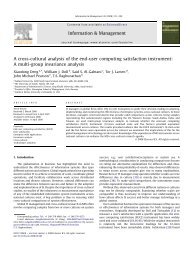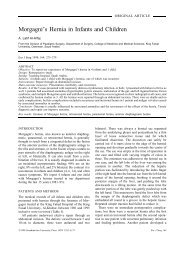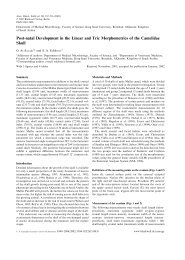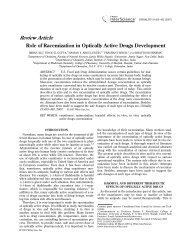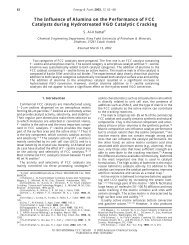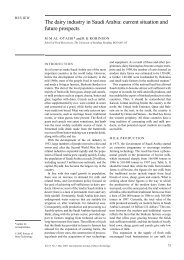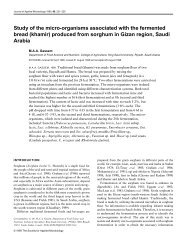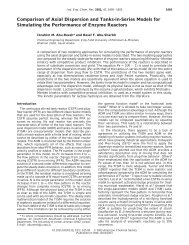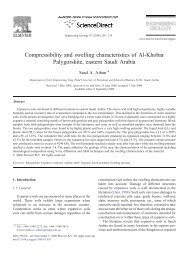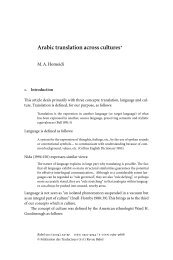Enslavement and Manumission in Saudi Arabia, 1926-38
Enslavement and Manumission in Saudi Arabia, 1926-38
Enslavement and Manumission in Saudi Arabia, 1926-38
You also want an ePaper? Increase the reach of your titles
YUMPU automatically turns print PDFs into web optimized ePapers that Google loves.
ALAINE S. HUTSON<br />
Table 10. <strong>Saudi</strong> <strong>Arabia</strong>: occupation <strong>and</strong> reason for runn<strong>in</strong>g away<br />
Agricultural Commercial Domestic<br />
Total Total<br />
Reason for runn<strong>in</strong>g away n % n % n % (n) (%)<br />
Family reasons 0 0 4 17 2 8 6 9<br />
Free status threatened 1 7 4 17 4 15 9 14<br />
Ill treatment 14 93 6 25 14 54 34 52<br />
Sale 0 0 10 41 6 23 16 25<br />
Total 15 100 24 100 26 100 65 100<br />
ill treatment as a reason for runn<strong>in</strong>g away. In fact, 93 percent of runaway slaves<br />
<strong>in</strong> agricultural work cited ill treatment as the reason they had ed. On a<br />
comparative basis, agricultural laborers were 3.7 times more likely than commercially<br />
utilized slaves to give ill treatment as a reason for runn<strong>in</strong>g away.<br />
Commercial workers were more likely than domestic or agricultural workers<br />
to leave their masters because of an impend<strong>in</strong>g sale. Abdul Kheyr, a 25-year-old<br />
camel driver, ran away from his master, Meccan slave dealer Abdulla Gari, <strong>in</strong><br />
1935. Abdul Kheyr had tried to run away three years before, but he had been<br />
apprehended by the Jeddah police <strong>and</strong> sent back to Mecca. 53 His reason for<br />
runn<strong>in</strong>g the rst time is not recorded. However, on his second attempt, Abdul<br />
Kheyr cited his imm<strong>in</strong>ent sale to Amir Abdullah, the brother of K<strong>in</strong>g Ibn Saud<br />
<strong>and</strong> a man with a reputation for cruelty to his slaves. 54 Abdul Kheyr’s story<br />
shows that sale was a gamble for commercial slaves; their circumstances <strong>and</strong><br />
treatment would change with their new masters, perhaps for the worse, as <strong>in</strong><br />
Abdul Kheyr’s case. Also, their commercial skills may have emboldened them;<br />
their actions may denote that commercial slaves knew they had skills that made<br />
their freedom viable.<br />
Conclusion<br />
The simple act of runn<strong>in</strong>g away illustrates that some slaves <strong>in</strong> <strong>Saudi</strong> <strong>Arabia</strong> were<br />
not treated with the benevolence that the shariah encourages. The data from the<br />
documents of 90 runaways show that many masters ill-treated their slaves<br />
(n 5 47, or 52.25 percent), usually starv<strong>in</strong>g or beat<strong>in</strong>g them. Another 12 former<br />
slaves (13.25 percent) had been freed but were re-enslaved or threatened with<br />
re-enslavement. Yet other masters threatened their slaves with actions not<br />
condemned by the shariah, such as sale (n 5 17, or 19 percent). Some fugitive<br />
slaves (n 5 14, or 15.5 percent) left for family reasons; they ran away to avoid<br />
53 Petrushevsky, Islam <strong>in</strong> Iran, p. 157, notes that shariah provides a sort of fugitive slave law; fugitive slaves had<br />
to be arrested <strong>and</strong> returned to their owner. Muhyidd<strong>in</strong> al-Nawawi, Gardens of the Righteous, trans. Muhammad<br />
Zafrulla Khan (London: Curzon Press, 1975), p. 296, <strong>in</strong>cludes a hadith chronicled by Muslim <strong>and</strong> related by Jabir<br />
that prohibits a slave from runn<strong>in</strong>g away from his master.<br />
54 F.O. 905/28, 24 January 1935.<br />
66



